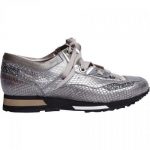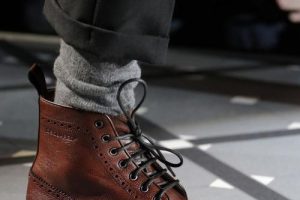Introduction
Shoes are not merely functional accessories to protect our feet; they are also powerful fashion statements that can convey our personality, style, and even our social status. The world of footwear is a vast and diverse one, with an array of styles, designs, and materials that cater to the distinct tastes and preferences of both men and women. In this comprehensive guide, we will delve into the fascinating realm of shoe styles, exploring the various categories, their history, and the evolution of these essential wardrobe elements.
Part 1: Men’s Shoe Styles
1.1 Oxford Shoes
The Oxford shoe is the quintessential formal footwear for men. Characterized by its closed lacing system, sleek design, and low heel, Oxfords exude sophistication. We will examine the different variations of Oxfords, such as Cap-Toe, Plain-Toe, and Wingtip Oxfords, and discuss how they can be worn to suit various occasions.
1.2 Derby Shoes
Derby shoes, also known as Bluchers, are slightly less formal than Oxfords due to their open lacing system. This section will explore the design features of Derby shoes, including the apron toe and split toe styles, and offer guidance on when and how to wear them.
1.3 Brogue Shoes
Brogue shoes are a unique category of footwear, known for their decorative perforations and detailing. We will delve into the history of brogues, discussing their origins in Scotland and Ireland and examining the different brogue styles, from full brogues to semi-brogues.
1.4 Loafers
Loafers are a versatile and comfortable shoe style. We will explore the different types of loafers, such as penny loafers, tassel loafers, and horsebit loafers, and provide insights on how to incorporate them into your casual and semi-formal outfits.
1.5 Boots
Boots are essential for various occasions, from casual to rugged. This section will cover the wide range of men’s boots, including Chelsea boots, Chukka boots, and work boots. We will discuss the history of these styles and provide tips on styling them for different settings.
1.6 Sneakers
Sneakers have evolved from sports and athletic footwear to fashion staples. We will delve into the world of men’s sneakers, examining classic styles like low-top and high-top sneakers, as well as more recent trends in sneaker design and technology.
1.7 Sandals and Slippers
While often reserved for casual and warm-weather occasions, sandals and slippers are integral parts of a man’s wardrobe. This section will explore the various styles and materials used in crafting comfortable footwear for men.
Part 2: Women’s Shoe Styles
2.1 High Heels
High heels are a symbol of femininity and elegance. We will delve into the history of high heels, from their origins in ancient Egypt to their iconic role in women’s fashion. Various types of high heels, such as stilettos, wedges, and block heels, will be discussed in detail.
2.2 Flats
Flats provide a comfortable and stylish alternative to high heels. This section will explore the diverse world of women’s flats, including ballet flats, loafers, and mules, and discuss when and how to pair them with different outfits.
2.3 Boots
Women’s boots come in a wide array of styles, from ankle boots to knee-high boots. We will examine these styles, their history, and the materials used in their construction. Additionally, we will offer tips on how to incorporate boots into your fashion repertoire.
2.4 Sandals
Sandals are the go-to choice for warm-weather comfort. We will discuss the various types of women’s sandals, such as gladiators, flip-flops, and espadrilles, and explore their cultural significance and style possibilities.
2.5 Sneakers
Just like men’s sneakers, women’s sneakers have become a fashion staple. We will analyze the evolution of women’s sneakers, from their athletic origins to their current role in streetwear and athleisure fashion.
2.6 Wedges
Wedges provide both style and comfort, making them a popular choice for women. This section will focus on wedge sandals and shoes, discussing their design, history, and how to wear them for different occasions.
2.7 Pumps
Pumps are versatile and classic women’s shoes that deserve special attention. We will explore the different types of pumps, such as pointed-toe, round-toe, and peep-toe pumps, and provide styling tips for each.
Part 3: The Evolution of Shoe Styles
In this section, we will trace the evolution of shoe styles, from ancient civilizations to modern times. We will uncover how culture, technology, and fashion trends have influenced the design and popularity of different shoe styles for both men and women.
Part 4: Materials and Craftsmanship
The choice of materials and craftsmanship plays a significant role in the comfort, durability, and style of footwear. We will discuss the materials commonly used in shoe production and how skilled craftsmanship can enhance the quality and aesthetics of shoes.
Part 5: Fashion and Footwear
The relationship between fashion and footwear is a dynamic one. We will explore how shoes have been used to make fashion statements and how designers and celebrities have influenced shoe trends over the years.
Conclusion
Shoe styles are a reflection of our personal tastes, cultural backgrounds, and the ever-changing world of fashion. This comprehensive guide has provided an in-depth exploration of men’s and women’s shoe styles, from timeless classics to contemporary trends. Whether you’re a fashion enthusiast or simply seeking to expand your knowledge of footwear, this guide offers a rich resource for understanding the diversity and history of shoes in our lives.
So, step into the world of shoes, where comfort, style, and self-expression unite, one step at a time.
















Add Comment